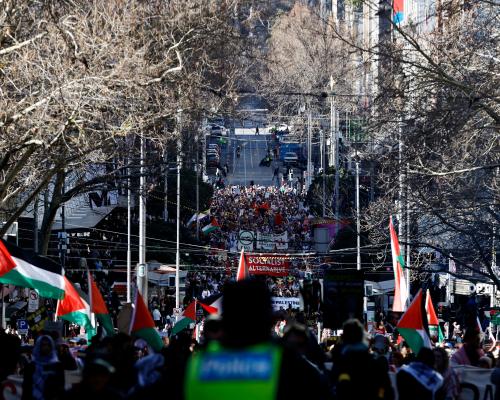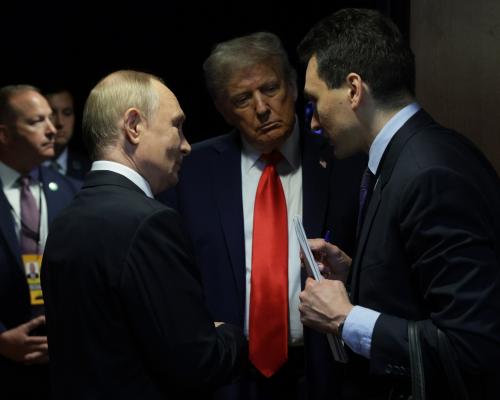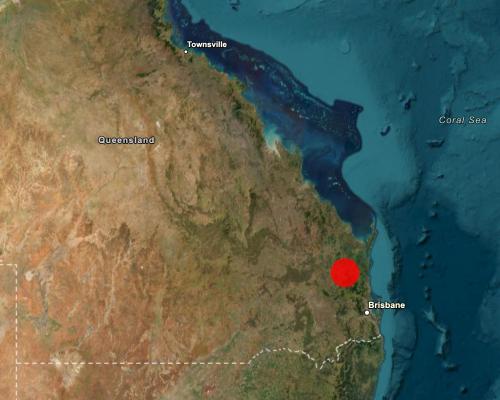
An organiser of a pro-Palestine protest in Melbourne’s CBD says demonstrators were left “traumatised and confused” after police blocked their path at King Street Bridge – while thousands in New South Wales were able to march across the Sydney Harbour Bridge.
Tasnim Sammak from Free Palestine Coalition Naarm told Guardian Australia police did not inform protest organisers they were going to block the bridge before they arrived on Sunday afternoon.
Police had previously urged protesters to change their plans, claiming that blocking King Street Bridge – a major thoroughfare into Melbourne’s CBD – could delay emergency services and put lives at risk.
Sammak estimated about 25,000 people protesting against the ongoing starvation in Gaza and demanding a ceasefire marched from the State Library of Victoria through the city to the bridge and were “shocked” to be met by a “heavy police presence”.
“It was a huge display of force by Victoria police against civilians and against members of the public who have been protesting for over 90 weeks in Melbourne,” Sammak said.
Images showed police in riot gear behind barricades on King Street Bridge, backed by a row of mounted officers and riot squad vans.
Sammak said protesters initially sat down at the bridge crossing, with footage showing fellow organiser Mohammad Sharab urging the crowd to remain calm.
“We are sitting here for Palestine … peacefully,” Sharab said.
“We have women, children, vulnerable people.”
Jordan van den Lamb, a Victorian Socialists candidate known online as PurplePingers, attended the protest. He said he was “shocked” to turn on to King Street and see the bridge closed and police “kitted out in riot gear, shields, horses, armoured vehicles, the lot”.
“I think they assumed that if they shut down the bridge, the protest would be less visible but really it’s drawn more attention to the protest,” van den Lamb said.
“It would have just been done in half an hour if they hadn’t closed the bridge. It’s a bit stupid of them, really.”
Sign up: AU Breaking News email
He said police mostly stood silently behind their shields, with the main protest dispersing around 3pm as most attenders turned back towards the State Library.
A “small group” wearing masks and goggles stayed, van den Lamb said. Footage shows the group stopped traffic, burnt an Australian flag and spray-painted “Abolish Australia” on to Spencer Street.
In a statement, police said about 3,000 protesters gathered at the State Library on Sunday and “despite repeated requests from police, they marched to King Street”.
“As a result of this, Victoria police closed the King Street Bridge and diversions were put in place,” the statement said.
They confirmed there were no arrests but they were following up a report that an egg was thrown at a person during the protest.
Police did not answer specific questions about how many officers were deployed or the decision-making behind blocking the bridge, citing operational reasons. They said there had been no reports made to them of disruption to emergency services.
Sammak said protesters were left “feeling very traumatised and confused” by the police response, suggesting it was made at the “the encouragement” of the premier, Jacinta Allan.
“The Sydney Harbour Bridge was facilitated quite freely and easily, and there was a positive atmosphere. So why in Melbourne did we have to face riot cops?” Sammak said.
On Saturday, Allan had warned any protesters disrupting emergency services “will be dealt with swiftly”. She defended her comments on Monday, telling ABC Radio Melbourne she had been focused on “ensuring that safety wasn’t compromised”.
Allan said the protest was peaceful and backed the police response. She also said there was “a small group of extremists behaving in an extreme way”.
David Mejia-Canales, senior lawyer at the Human Rights Law Centre, said there had also been a heavy-handed response to Sydney’s protest. On Saturday, NSW police had sought an order to prohibit the protest going ahead but it was rejected by the supreme court.
“In NSW and Victoria we are seeing how anti-protest laws from the Minns and Allan governments are emboldening heavy handed policing and the repressive treatment of protesters and attempts to shut down protests,” Mejia-Canales said.
“Governments and police have a legal obligation to protect protesters, not punish or hinder people who are peacefully demonstrating and exercising their human right to demand justice.”





